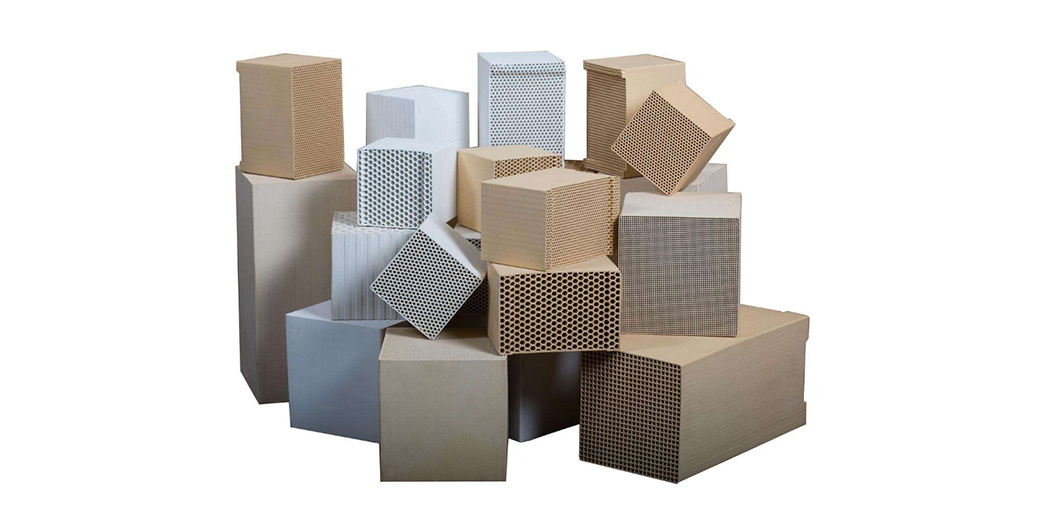Category
TAGS

Ceramics for RTO/RCO equipment
The RTO heats organic waste gas to above 760℃, causing VOCs in the waste gas to oxidize and decompose into carbon dioxide and water. The high-temperature gas generated by oxidation flows through a special ceramic heat accumulator, causing the ceramic body to heat up and "store heat". This "store heat" is used to preheat the incoming organic waste gas, thus saving fuel consumption for waste gas heating. Ceramic heat accumulator should be divided into three or more zones or chambers, with each chamber undergoing a sequence of heat storage - heat release - cleaning, repeating the process and working continuously.
The principle of RCO regenerative catalytic combustion method is: Combine regenerative oxidation and catalytic oxidation, fill the upper part of the ceramic heat accumulator with a catalyst, and use the catalyst to oxidize and decompose organic waste gas into CO2 and H2O at a relatively low ignition temperature (280-500 ℃). The high-temperature gas produced by oxidation flows through another heat storage chamber to continue catalytic oxidation reaction and release heat, causing the ceramic body to heat up and "store heat". This heat storage is used to preheat the organic waste gas that enters later. RCO devices are similar to RTO devices, often using a bed design, with ceramic heat storage bodies filled at the bottom of the heat storage chamber and catalysts filled between the ceramic heat storage bodies and the oxidation chamber.


